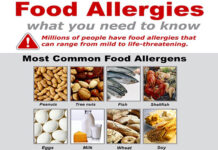Drinking and process water. Parameters to guarantee food safety and public health, currently being revised at European level. Some recommendations also for ‘tourists by chance’.
Drinking water, which rules
The definition of ‘food’ includes drinking water and natural mineral water, as well as so-called ‘process’ water. That is, ‘intentionally incorporated into food in the course of its production, preparation or treatment. It includes water at the points where values must be respected as laid down in Article 6 of Directive 98/83/EC and without prejudice to the requirements of Directives 80/778/EEC and 98/83/EC‘ (EC Reg. 178/02, Article 2).
The quality of water intended for human consumption is the subject of specific European and national regulations. (1) With the aim of ensuring public health – starting with the most vulnerable population groups such as children, pregnant women and the elderly – against the risk of exposure to harmful contamination. (2)
The concept of potability is conditioned by compliance with a series of parameters – chemical and microbiological – that water samples must meet in order to be fit for consumption. Some parameters are not always respected, due to environmental conditions in different territories. This is why regional transitional derogation measures, authorised by the Ministry of Health, are used. With the idea of balancing water supply and safety requirements, as far as possible.
Drinking water, sensory analysis and ‘tourists by chance
Sensory analysis (clarity, absence of unpleasant smells and tastes) has long been the only criterion for assessing the suitability of water matrices. And it still is for those who – on mountain hikes or ‘adventure trips’ to distant countries – face the risk of drinking from water sources without adequate controls.
The organs of sense, however, can be dangerously misleading. Bacterial contamination can ruin a holiday, but can also cause serious toxins. Water, a primary natural resource, is in fact one of the main vehicles of transmission of various diseases.
Chemical contamination – from metals, where present in high concentrations, residues of agrotoxics and other substances – in turn cannot be detected by sensory organs. Apart from some solvents and metals responsible for organoleptic evidence).
It is therefore recommended that ‘tourists by chance’ only consume beverages in sealed packages, avoiding the consumption of ice and raw food, when visiting countries that cannot guarantee a safe water supply.
Transparency, colour and smell may inspire a prose or a song, but they are not worth a hospital adventure or a food safety crisis. Without analysis, better not to drink and forbidden to use in food production processes.
Drinking water, composition and microbiology
The chemical elements that characterise water fall into two categories, macroelements and microelements. They are both protagonists of the metabolic processes that take place in our organism and can be present in the form of salts, ions or organic compounds.
Macroelements are those present in the human body whose daily requirement exceeds 100 mg (calcium, chlorine, phosphorus, magnesium, potassium, sodium and sulphur being the main ones). Micro-nutrients, on the other hand, are those whose daily requirement is less than 100 mg (iron, copper, cobalt, fluorine, iodine, manganese, molybdenum, copper and selenium being the main ones).
The excess or deficiency of the above-mentioned elements could compromise the regular functioning of some of the most important processes that take place within our bodies.
From a microbiological point of view, water is not sterile, as it contains a normal microbial load consisting of so-called ‘environmental bacteria’. There is also an ‘unwanted’ microbial component, which should be absent in good quality water samples.
Drinking water, legal parameters under revision
Directive 98/83/EC (the so-called Drinking Water Directive) and Legislative Decree 31/01, which transposed it, define the criteria and values to be respected in chemical-physical and microbiological measurements in order to qualify a water as drinkable:
- microbiological parameters (Escherichia Coli and enterococci, zero tolerance),
- chemical parameters (metals, pesticides, polycyclic aromatic hydrocarbons and other substances such as benzene and vinyl chloride, among others),
- indicator parameters.
The proposed revision of the Drinking Water Directive, adopted in Brussels on 1.2.18, was voted by the Strasbourg Assembly on 23.10.18. The process will be concluded with an agreement between the Parliament, the Council and the European Commission, expected in the 1st half of 2019. The main changes relate to the extension of the list of substances to be monitored.
The chemical parameters are to be updated in the light of WHO recommendations and emerging risks from a variety of substances. Thus, among other things, the introduction of maximum values for bisphenol A (BPA, an endocrine disruptor widely used in the production of plastics, 0.01μg/l), beta-estradiol (a natural estrogen, 0.001μg/l) and nonylphenol (an environmentally harmful surfactant, 0.3μg/l) is expected. And regular monitoring of polyfluoroalkyls (PFAS).
No attention to food contact materials
The aim of the revision is to strengthen public confidence in water supplies and promote the use of tap water. With the further aim of reducing the consumption of single-use plastic packaging, in the context of the circular economy.
On the other hand, a major shortcoming of the reform project concerns the specific regulation of materials intended to come into contact with water. Materials that come into contact with water must be regulated as strictly as food packaging (MOCA). France, the Netherlands, Great Britain and Germany have already taken steps to harmonise their respective hygiene standards for materials and products in contact with drinking water.
The European Commission considers it sufficient to rely on the Building Materials Regulation instead of extending the scope of the Drinking Water Directive in this sense. As requested by the 4 Member States, with the support of Italy, Belgium, the Czech Republic and Luxembourg, as well as the European Drinking Water Alliance (EDW) and the EU delegation of the Association of Water Suppliers (EurEau).
Dario Dongo and Ylenia Desireè Patti Giammello
Notes
(1) Cf. d.lgs. 31/01, implementation of dir. 98/83/EC Concerning the quality of water for human consumption. As amended in All. II and III, by decree Min. Sal. 14.6.17, in compliance with dir.EU 2015/1787. EU Decision 2018/840 in turn updated a checklist of substances to be monitored at the Union level in the field of water policy, implementing the fir. 2008/105/EC
(2) Water for human consumption qualifies as food and is therefore subject to the food safety requirements defined in general terms by Reg. EC 178/02 (c.d. General Food Law) https://eur-lex.europa.eu/LexUriServ/LexUriServ.do?uri=CONSLEG:2002R0178:20060428:IT:PDF
(3) See Note 1









